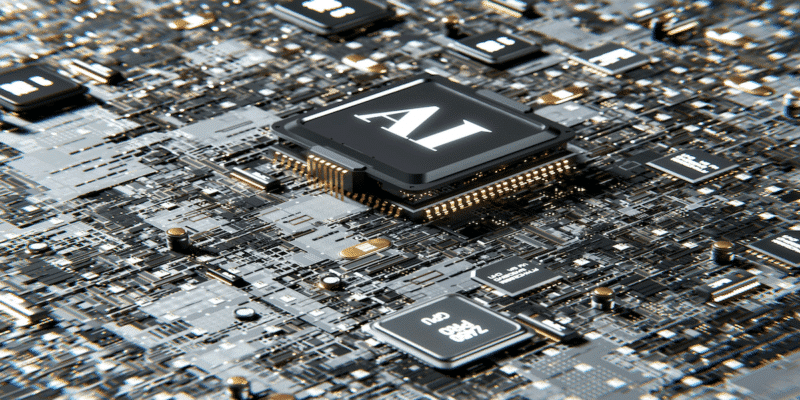Image commercially licensed from: Unsplash
The Dream of a Personal AI Assistant
The concept of a personal AI assistant has captured our imaginations ever since Tony Stark’s Jarvis appeared in the Iron Man films. An AI assistant that understands our needs, responds to voice commands, and manages various aspects of our lives is no longer just science fiction. With advancements in artificial intelligence, creating a Jarvis-like virtual assistant is becoming increasingly within reach for developers and tech enthusiasts alike.
What Makes Jarvis So Intriguing?
Jarvis represents the pinnacle of a virtual assistant—intelligent, interactive, and incredibly personalized. This AI butler, capable of managing Tony Stark’s home and helping Iron Man with his heroic deeds, is a compelling example of how AI can become an integral part of our personal and professional lives. The idea of having your own Jarvis to play music, organize your schedule, or even give you a break with some humor is an exciting prospect.
The Building Blocks of an AI Assistant
At the heart of an AI assistant like Jarvis lies natural language processing (NLP), the technology that enables the understanding of human language. An AI assistant employs NLP to interpret user input, process it, and respond in a way that mimics human conversation.
The Role of Machine Learning
Machine learning is another critical component, allowing the assistant to learn from interactions and improve over time. With machine learning, an AI assistant can adapt to the user’s preferences, making the experience more personalized and efficient.
Programming Languages and Libraries
Creating an AI assistant involves many programming languages and libraries. Python, known for its simplicity and the vast number of libraries, is particularly popular for such projects due to its strong support for machine learning and NLP tasks.
Your Own Jarvis: The First Step to Creating an AI Assistant
Python is often the first step in creating an AI assistant. It’s not only a versatile programming language but also has many libraries that simplify complex tasks such as face recognition, voice recognition, and other AI functions.
Utilizing Various Libraries
Many libraries are available to help with the different tasks you might want your AI assistant to perform. For instance, libraries like TensorFlow or PyTorch can be used for building machine learning models that will power your assistant.
Understanding the Operating System
The operating system your AI assistant will run on is another crucial consideration. Whether it’s Windows, macOS, or a Linux variant, each system has its own set of tools and capabilities that can influence how your AI is built and functions.
Developing a Virtual Assistant: Tools and Technology
To build an AI assistant, you’ll need the right tools for coding, testing, and deploying your project. This might include integrated development environments (IDEs), version control systems, and collaboration tools for team projects.
The Importance of Feedback and Testing
Continuous feedback and testing are essential to refine your AI assistant. Just as Tony Stark’s Jarvis was continually improved upon, your AI project will benefit from user feedback and iterative development.
The Power of Voice Commands
Voice commands are a feature that can make your AI assistant feel more like Jarvis. Integrating voice recognition technology is a significant step in creating a more interactive and user-friendly assistant.
The Promise of AI in the Modern World
The potential of AI extends beyond personal convenience—it’s a tool that can significantly enhance professional productivity. An AI assistant can help manage tasks, access information quickly, and even automate routine jobs, allowing users to focus on more complex and creative work.

Image commercially licensed from: Unsplash
The Rise of Virtual Assistants
Virtual assistants are becoming more commonplace in the digital world, offering users a simpler way to interact with technology. From setting reminders to writing articles, the tasks an AI assistant can handle are rapidly expanding.
The Future of AI Assistants
As technology advances, the capabilities of AI assistants will only grow. The day when everyone can have their own Jarvis is on the horizon, with AI becoming more integrated into our everyday lives.
Bringing the Vision to Life
Embarking on the journey to create an AI assistant like Jarvis is both a challenge and an adventure. With the right focus, tools, and understanding of the underlying technology, it’s a project that can provide immense satisfaction and utility. Whether you’re a solo developer or part of a team, the goal is clear: to bring the idea of a personal AI assistant into reality, making the stuff of superhero movies an everyday part of our world.
Crafting a Personal Assistant Inspired by Tony Stark’s Jarvis
The allure of creating a personal assistant that emulates the efficiency and charisma of Tony Stark’s Jarvis from the Iron Man series is an aspiration for many tech enthusiasts and developers. Let’s break down the elements that contribute to developing such sophisticated software and the role of cutting-edge models like ChatGPT in this innovative endeavor.
Image commercially licensed from: Unsplash
The Blueprint of a Personal AI Assistant
The foundation of any personal assistant lies in its ability to understand and process user requests accurately. This requires integrating a blend of advanced technologies, including natural language processing and machine learning, to interpret and execute a wide array of tasks.
Incorporating the ChatGPT Model
Integrating a model like ChatGPT can significantly enhance the capabilities of your personal AI assistant. With its ability to understand context and generate human-like text, ChatGPT can provide your assistant with the power to answer queries with remarkable accuracy and even engage in meaningful conversation.
Building an App That Listens and Learns
Developing an app for your AI assistant requires careful consideration of the user interface and experience. The app should be intuitive, allowing easy communication through voice or text input. More importantly, it should learn from interactions, tailoring responses to the user’s preferences and behavior, much like Tony Stark’s Jarvis evolves to suit his needs.
The Role of Google and Other APIs
Incorporating APIs from tech giants like Google can significantly augment the functionality of your personal assistant. These APIs can provide access to a vast array of services and information, from weather updates and navigation to control of smart home devices, expanding the assistant’s ability to manage tasks effectively.
Selecting the Right Software and Hardware
Choosing the right software and hardware is crucial for the seamless operation of your personal assistant. The software must be robust enough to handle complex tasks and integrations, while the hardware, particularly the computer or device the assistant runs on, must be capable of supporting the software’s demands.
Designing an AI Assistant for the User
At the heart of an AI personal assistant is the user experience. It should not only respond to commands but also anticipate needs based on user habits and preferences. This level of personalization makes the assistant not just a tool but a reliable companion, much like Jarvis is to Tony Stark.
The Evolution of Personal Assistant Technology
As technology progresses, the capabilities of AI personal assistants will only become more advanced. We can expect future iterations to be more proactive, managing tasks with greater autonomy and offering insights and suggestions that can assist users in their daily lives.
The Journey to Your Own Jarvis
Creating your own Jarvis-like personal assistant is a journey that combines passion, innovation, and technology. While it may be challenging, the reward lies in crafting a virtual assistant that not only answers your questions and plays music on command but also becomes an indispensable part of your daily routine, enhancing productivity and providing companionship.
Frequently Asked Questions
Yes, there are AI technologies available today that resemble Jarvis in some aspects. They combine natural language processing, machine learning, and other AI capabilities to perform a variety of tasks. However, the level of autonomy and versatility shown by Jarvis in the Iron Man films is still a work in progress in real-world technology.
What is the closest AI to Jarvis?
The closest real-world AI to Jarvis would likely be advanced virtual assistants like Google Assistant, Amazon’s Alexa, or Apple’s Siri, which can perform a variety of tasks using voice commands. These systems are continuously improving and incorporate many of the features seen in Jarvis, such as home automation control and personalization through learning user preferences.
What is similar to the Jarvis app?
Apps similar to the Jarvis AI include various virtual assistants that are available on smartphones and smart home devices, such as Google Assistant, Alexa, and Siri. These apps use voice recognition and machine learning to interact with users, control smart home gadgets, provide information, and more, offering a Jarvis-like experience in many ways.
What type of AI was Jarvis?
Jarvis from the Iron Man series is a type of fictional AI known as an artificial general intelligence (AGI), which can understand, learn, and apply knowledge across a wide range of tasks, similar to a human. In reality, most current AI systems, including those used for virtual assistants, are considered artificial narrow intelligence (ANI), specialized in performing specific tasks.











